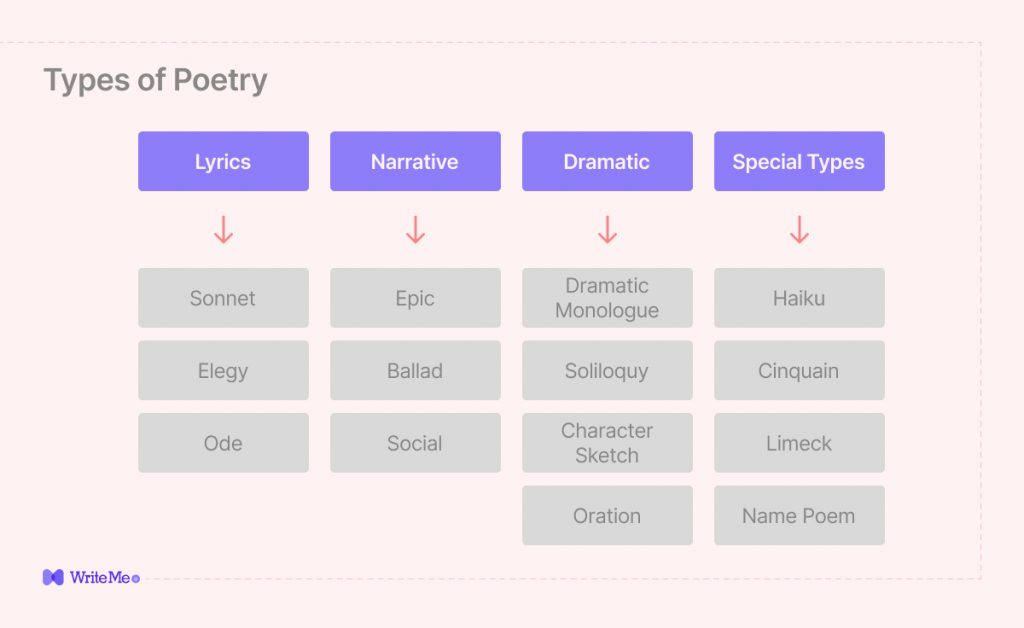
Poetry is an art that usually flows naturally through our words. But with some practice you can learn the basics of poetry writing. Poetry writing becomes a skill if continuous practice in a short period of time. However, starting your poetry writing journey on the right foot is just as important as deciding to write poetry. Unlike conventional poetry writing methods and techniques, the digital revolution has transformed the ways of publishing and selling poetry.
Social media has changed the way poets write and readers read poetry. According to an estimate, over 47% of total poetry sales in the US come from InstaPoetry. The modern poets have contributed significantly towards the revival of poetry on social media. [1]
Whether you are avid poetry reader or someone who wants to learn poetry writing as a skill, here are some basics of poetry writing you should know:
Before you get into the practical aspects of poetry writing, you need to understand the basic elements of poetry writing. There are five main elements of poetry writing including:
It is the main rhythmic structure within the poem. A number of syllables and the pattern in which these syllables are emphasized makes up the Meter of a poem.
When the last one or more syllables of separate words math rhyme is created. A rhyming poem has one or more syllables which share this type of relationship within a verse.
It is the rhyming pattern within a poetry verse. The scheme may contain rhyming words at the end of each line throughout the stanza. Alternatively, the scheme may contain rhyming words in alternating lines or in couplets. An arrangement of letters usually signifies the poetry scheme.
A verse describes the relationship between the meter and rhyme within a poem.
A group of lines within a verse of a poem is called stanza. Stanzas usually follow a similar meter and contain a similar idea, but not always. A break or blank line is usually used to separate different stanzas within a poem.

Just like any other form of artistic expression, poetry has its own unique types and structures. Usually, the structures are segregated based on rhyme or scheme of poetry. There are many different structures that poets can use in their writing. Some common poetry structures include:
This is a type of poetry that does not have a set rhyme or meter. It relies on the poet’s natural rhythm and flow of language.
A sonnet is a 14-line poem that is traditionally written in iambic pentameter (a rhythmic pattern of 10 syllables per line, with the stressed syllable coming second). There are various types of sonnets, including the Italian (or Petrarchan) sonnet and the English (or Shakespearean) sonnet.
A haiku is a traditional Japanese form of poetry consisting of three lines. The first and third lines contain five syllables, while the second line contains seven syllables. Haiku poems often focus on nature and the changing seasons.
A limerick usually contains five lines in every poem. The limerick follows its own rhyming scheme: AABBA. Usually, Limericks are lighthearted poems with a touch of humor.
A villanelle is a 19-line poem with a specific rhyme scheme: ABaAabAB (repeated). It consists of five tercets (three-line stanzas) and a final quatrain (four-line stanza).
A ghazal is a traditional Arabic and Persian form of poetry consisting of a series of rhymed couplets. The final couplet typically contains the poet’s signature or pen name.
This is a type of poetry that does not have a set rhyme, but does have a set meter (usually iambic pentameter).
These are just a few examples of the many different structures that poets can use in their writing. It’s important to remember that poetry is a form of creative expression, and poets are free to experiment with different structures and forms to find what works best.
Like most creative writing skills, poetry writing requires a significant amount of practice, patience and learning. It is a continuous process of learning and improving your skills. Most successful poetry writers develop their unique poetry writing style over time. Here are some practical tips to improve your poetry writing skill:
One of the primary sources of inspiration for emerging writers is to read poetry from others. As a new member of the poetry community, you need to see the world from a poet’s perspective. Subscribe to various online poetry resources from famous poets. Dig into the history of popular poets and read their work for inspiration. You can also follow and see the work of social media poets.
Another great way to get into the poetic spirit is to play live recitations of famous poetry writings. Live recitations help in setting the mood and the right mindset for poetry writing. Not only do you get to appreciate the beauty of poetry but also you get to understand the structure, syllables and various other elements of poetry writing. The process gives you a fair idea of how poets stress on different syllables, how to use assonance and alliteration and how to use clever line breaks among other things.
Don’t overwhelm yourself with big poetry writing goals. Short poems like Haiku are perfect for starting your poetry journey. Instead of jotting meaningless verses on paper, try to write small, clear verses with lots of meaning. After that, you can build on small poetry. Similarly, it is recommended not to obsess over the opening line or stanza of the poetry. Instead of spending hours on finding the correct first line, just continue writing the remaining lines of the poetry. Ultimately, as you finish, you will have a direction and find better ideas for opening lines.
Express big ideas and paint with your words. Try telling a story with your poetry to keep the listeners engaged. Use an AI Story Generator to generate a story and start from there.
Also Read: Your Guide to Content Ideation – Never Run Out of Content Ideas Again
Consult a thesaurus or a rhyming dictionary to find out word ideas on how to complete your poem. Many professional writers consult these tools to improve their poetry. Similarly, you can also use an AI poetry writing assistant to get new poetry ideas.
Once you have acquainted yourself with the world of poetry and the poetry writing style from other poets, you can get into the actual writing process. Here are some basic steps to start poetry writing:
Choose a theme or subject for your poem. This could be something personal to you, or it could be inspired by a current event or something you have observed in the world around you.
Experiment with language and imagery. Poetry is all about using language in creative and evocative ways. Play around with different words and phrases, and try to use descriptive language and imagery to bring your poem to life.
Consider the structure of your poem. Will it be free verse, with no set rhyme or meter, or will it have a more traditional structure, like a sonnet or haiku? The structure of your poem can help to convey the theme and emotion of your writing.
Write, Revise and edit your poem. Reading your poem out loud can help you to identify areas that need improvement or clarification. Don’t be afraid to make changes and revisions as you go.
If you want to save time and bring more value to your poetry writing efforts, consider using an AI poem generator. All you need to do is enter the main idea of your poem and AI will generate poetry for you. After that, you can improve on the output depending upon your likes and preferences.
Share your poem with others for feedback. Getting feedback from others can help you to see your poem from a different perspective and make further improvements.
Remember, writing poetry is a process, and it’s okay to make mistakes and try new things as you develop your craft. Poetry writing is a creative skill that can serve as a source of pleasure and gratification on special occasions or during leisure time. The most important thing is to find what works best for you and your message.
Recommended Reads:
References:
[1] Poetry Statistics – Commaful

